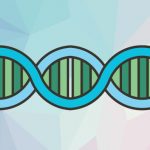The extraction of nucleic acids is the first step in numerous research and clinical applications.1 High-throughput multiplex systems have been introduced for genotyping, gene expression, and epigenetic profiling that require the extraction of numerous nucleic acid samples as starting material. The results obtained using these approaches have broad implications both for basic research and for the diagnosis and follow up of clinical cases.
Manual procedures for nucleic acid extraction are well established but are time and effort consuming.2 Thus, there is an urgent need to develop optimized methods for nucleic acid extraction from clinical and research samples, that require less effort and time of the laboratory personnel. Automated extraction platforms have undergone rapid development and represent an alternative to manual extraction methods.3,4,5 However, their optimization also faces certain challenges that still need to be addressed.
Quality standards for automated extraction platforms
Throughout the process of their development, automated extraction platforms are rigorously tested for the linearity and reliability of extraction.3,4,5 Moreover, their extraction yield is quantified and compared with the yield of manual extraction procedures. Further, the purity of the extracted nucleic acids, which is necessary to ensure their proper performance in downstream applications, is tested.2
Advancements in the development of automated extraction platforms
The establishment of automated nucleic acid extraction platforms, liquid handling systems, and microfluidic chips has advanced nucleic acid extraction both for research and clinical applications.
Automated nucleic acid extraction platforms
Several automated nucleic acid extraction platforms based mainly on solid-phase or magnetic beads methods have been developed.1,3,4,5 Major advantages of the introduced in the practice automated extraction platforms include the speed of extraction and the opportunity to process large batches of samples simultaneously. However, potential tradeoffs may be possible issues with nucleic acid purity and the time needed to set up the extraction system and samples.6
Automated liquid handling systems
Liquid handling is a challenging aspect in the process of nucleic acid extraction.2 Therefore, automated liquid handling systems have also been developed and routinely implemented in research and clinical laboratories. These liquid handling robots dispense precise volumes of reagents or samples and enable the simultaneous handling of multiple samples and their rapid processing. Barcode readers are an important part of such systems since they ensure the traceability of the samples. Overall, automated liquid handling systems facilitate the automation of different laboratory procedures, including nucleic acid extraction.1
Microfluidic chips
Nucleic acid extraction generally requires specialized equipment, dedicated facilities, and trained personnel, which may not be readily available at certain locations. However, the speed with which nucleic acid extraction and downstream applications can be performed may be very important, particularly for the analysis of clinical samples. The development of point-of-care platforms may resolve this problem by performing nucleic acid extraction and downstream applications without the need for specialized facilities and at the location where the clinical decisions are made. As a step in this direction, microfluidic chips that are based on solid phase extraction and contain all necessary reagents on inner chambers have been introduced.1 However, they still do not fulfill the requirements for a point-of-care extraction method particularly because the currently existing procedures for sample preparation are not suited to the point-of-care environment.1
Trends in the development of automated extraction platforms
Automated platforms for the extraction of nucleic acids have found broad applications in research and clinical laboratories. Future directions in their development include the miniaturization of the devices and the simplification of their handling. Moreover, the development of extraction systems that can be used as point-of-care devices is of particular interest due to their potential important clinical implications, especially in resource-limited settings.
Sources:
- Ali N, Rampazzo RCP, Costa ADT, Krieger MA. Current nucleic acid extraction methods and their implications to point-of-care diagnostics. Biomed Res Int. 2017;2017:9306564.
- Tan SC, Yiap BC. DNA, RNA, and protein extraction: the past and the present. J Biomed Biotechnol. 2009;2009:574398. doi: 10.1155/2009/574398. Erratum in: J Biomed Biotechnol. 2013;2013:628968.
- Verheyen J, Kaiser R, Bozic M, Timmen-Wego M, Maier BK, Kessler HH. Extraction of viral nucleic acids: comparison of five automated nucleic acid extraction platforms. J Clin Virol. 2012;54(3):255-259.
- Perandin F, Pollara PC, Gargiulo F, Bonfanti C, Manca N. Performance evaluation of the automated NucliSens easyMAG nucleic acid extraction platform in comparison with QIAamp Mini kit from clinical specimens. Diagn Microbiol Infect Dis. 2009;64(2):158-165.
- Lewandowski K, Bell A, Miles R, Carne S, Wooldridge D, Manso C, Hennessy N, Bailey D, Pullan ST, Gharbia S, Vipond R. The effect of nucleic acid extraction platforms and sample storage on the integrity of viral RNA for use in whole genome sequencing. J Mol Diagn. 2017;19(2):303-312.
- Thatcher SA. DNA/RNA preparation for molecular detection. Clin Chem. 2015;61(1):89-99.






